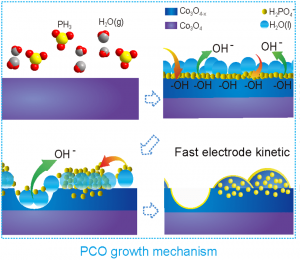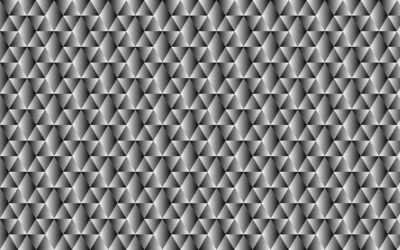Pseudocapacitors have drawn attention for enabling next-generation high-efficient energy storage devices, and the use of intermittent renewable energy resources as sunlight, wind, tide, etc. Transition metal oxides (TMOs) have been widely investigated as pseudocapacitive electrode materials because of their rich oxidation states available for reversible redox reactions. However, the real performance of TMOs is still unsatisfactory, resulting from their slow electrode kinetics and low surface reactivity. Surface modification is therefore one of the most effective strategies to overcome this challenge.

Phosphate ions functionalized Co3O4 nanosheets (PCO) growth mechanism.
Recently, Dr. Teng Zhai and Prof. Hui Xia at Nanjing University of Science and Technology (China) developed and reported a general strategy to improve the surface reactivity of TMO electrodes via phosphate ions functionalization. Interestingly, in the case study of phosphate ions functionalized Co3O4 nanosheets (PCO), a unique nanoarchitecture with porous ultrathin nanosheets decorated with nanoparticles was fabricated during the phosphate ions functionalization. Almost eightfold enhancement in specific capacitance could be achieved for the PCO electrode (1716 F g-1) in comparison with the Co3O4 electrode (215 F g-1). Particularly, an asymmetric supercapacitor (ASC) based on PCO cathode and 3D porous graphene anode was constructed and delivered a large energy density of 71.6 Wh/kg (at 1500 W/kg). The unique porous nanosheet morphology, high surface reactivity, and fast electrode kinetics for the PCO electrode are found to be responsible for the enhanced performance.
The phosphate ion functionalization strategy provides new opportunities for advancing high-performance electrodes and ASC devices.














